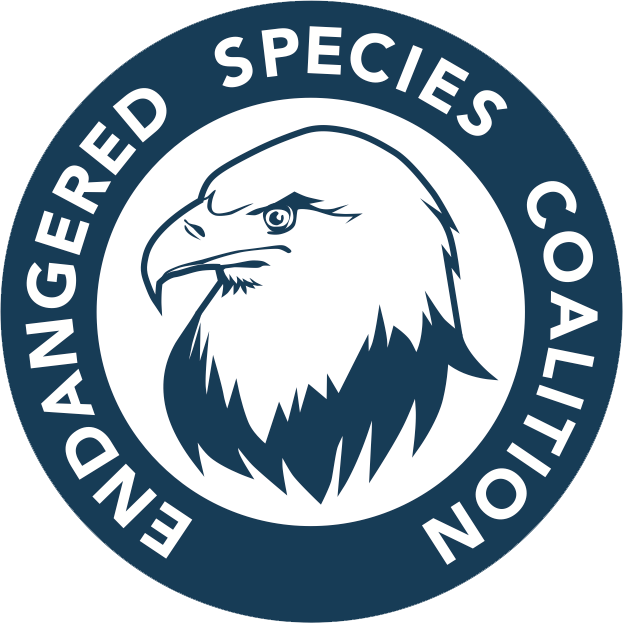Protect Our Ecology While We Grow the Economy
Materials to support Stimulus Funding for Wildlife and Public Lands
Letter to US Congress (5-18-2020)
The following are links to the citations referenced in the letter by section.
Introduction
Economic activity generated by restoration activities is well documented, producing between 13 and 30 jobs for every $1 million invested. Restoration of coastal wetlands can create as many as 29 jobs for every $1 million invested. https://cdn.americanprogress.org/wp-content/uploads/issues/2011/09/pdf/public_lands.pdf
Nielsen-Pincus, Max and Cassandra Moseley. Economic and Employment Impacts of Forest and Watershed Restoration in Oregon. Ecosystem Workforce Program. Working Paper Number 24, Spring 2010. https://scholarsbank.uoregon.edu/xmlui/bitstream/handle/1794/10776/WP24.pdf?sequence=1
Prioritizing Endangered Species Recovery
Restoring Public Lands
The Endangered Species Act is a popular law that enjoys the support of 90 percent of American voters. “Poll Finds Overwhelming, Broad-Based Support for the Endangered Species Act Among Voters Nationwide,” Tulchin Research. 2015.
https://earthjustice.org/sites/default/files/files/PollingMemoNationalESASurvey.pdf
https://defenders-cci.org/files/ESA_recovery_costs_2019.pdf
https://www.biologicaldiversity.org/programs/biodiversity/pdfs/Shortchanged.pdf.
https://www.fws.gov/ecological-services/about/what-we-do.html
https://www.fisheries.noaa.gov/feature-story/habitat-restoration-supports-jobs-stewardship
The Legacy Roads and Trails Remediation Program (LRT) is an example of a very successful program created by Congress to address problems with the USFS’s massive roads and trails system. LRT has created many thousands of good jobs while restoring watersheds and habitat, improving access and recreation, and providing drinking water protection. https://www.legacyroadsandtrails.org/
https://www.fs.fed.us/restoration/Legacy_Roads_and_Trails/
https://www.nps.gov/subjects/youthprograms/ycc.htm
Restoring Watersheds and Coastal Areas
Safeguarding Key Wildlife Corridors and Reducing Impacts to Wildlife from Infrastructure
https://www.epa.gov/hwp/what-epa-doing-healthy-watersheds, https://www.fisheries.noaa.gov/topic/habitat-conservation#how-we-restore,
https://www.fisheries.noaa.gov/national/habitat-conservation/reopening-rivers-migratory-fish
https://www.noaa.gov/topic-tags/coastal-restoration
A single acre of wetlands can hold up to 1.5 million gallons of rain or melting snow. Wetlands, once constructed or restored, also require little to no maintenance investment, a savings over conventional water treatment options. See: Function and Value of Wetlands. EPA 843-f-01-002c. Sep. 2001.
https://www.epa.gov/sites/production/files/2016-02/documents/functionsvaluesofwetlands.pdf,
https://nepis.epa.gov/Exe/ZyPURL.cgi?Dockey=30004TBD.TXT
https://www.wateronline.com/doc/constructed-wetlands-a-low-cost-alternative-0002
https://www.troutheadwaters.com/services-restoration-mitigation-climate-more/
https://www.beaverinstitute.org/management/stream-restoration/
Congress should consider incorporating the bi-partisan Wildlife Corridors Conservation Act, H.R. 2795 and (S. 1499) and the Tribal Wildlife Corridors
Act of 2019, H.R. 5179 (S. 2891) passed by the House Natural Resources Committee in 2020, and the bi-partisan wildlife crossing pilot program (Section 1125) and related provisions expanding wildlife infrastructure funding eligibility found in S.2302 unanimously passed by the Senate Environment and Public Works Committee in July 2019.
Addressing Invasive Species and Restoring Native Plants
https://www.fhwa.dot.gov/publications/research/safety/08034/08034.pdf
For a list of potential projects, see https://wildlandsnetwork.org/wp-content/uploads/2020/05/Wildlife-Crossing-List-for-Infrastructure-Funding.pdf
https://www.doi.gov/sites/doi.gov/files/uploads/invasive_species_impacts_on_infrastructure.pdf
Cooperative Alliance for Refuge Enhancement: Testimony submitted to U.S. Senate Appropriations Committee Subcommittee on Interior, Environment and Related Agencies FY 2021 Appropriations Request for National Wildlife Refuge System
https://www.doi.gov/sites/doi.gov/files/uploads/isac_green_economy_white_paper.pdf
Reaser and Waugh 2007; https://portals.iucn.org/library/sites/library/files/documents/2007-058.pdf
Promoting Wildlife Coexistence
Conclusion
http://www.bearsmart.com/managing-communities/waste-management/
For example: hiring additional wildlife rangers, conducting bear identification and bear spray deployment clinics, printing and distribution of education materials, conducting livestock husbandry workshops, purchase of equipment for removal of attractants, etc.
See also: http://fwp.mt.gov/fwpDoc.html?id=95623
Settele, Josef, Sandra Díaz Eduardo Brondizio, and Dr. Peter Daszak. COVID-19 Stimulus Measures Must Save Lives, Protect Livelihoods, and Safeguard Nature to Reduce the Risk of Future Pandemics. April 27, 2020. Available at https://ipbes.net/covid19stimulus
Ostfeld RS, Biodiversity loss and the rise of zoonotic pathogens. Ja. 2009.
Available at https://www.ncbi.nlm.nih.gov/pubmed/19220353
Wilkinson, David A., Jonathan C. Marshall, Nigel P. French, and David T. S. Hayman. Habitat fragmentation, biodiversity loss and the risk of novel infectious disease emergence. Dec. 2018.
Available at https://www.ncbi.nlm.nih.gov/pmc/articles/PMC6303791/.
Fact Sheets That Support Content of the Letter
Jobs and Econ Stimulus for Wildlife Crossings and Corridors
Mile By Mile – Ten Years of Legacy Roads & Trails
WA Delegation Legacy Roads and Trails Remediation Initiative Letter
Why America Needs Wildlife Crossings
Wildlife-vehicle Conflict, Crossing Structures, and Cost Estimates
Wildlife Corridor Conservation Act Fact Sheet
Socioeconomic Benefits of Habitat Restoration Factsheet
NOAA NMFS Report: Socioeconomic Benefits of Habitat Restoration
Exploring and Understanding the Restoration Economy
Job metrics for Escalante River Watershed Restoration
Notes on Escalante restoration jobs
Wildlife Crossing Success Stories in the Western States
The following are bills that support the goals of the letter. Please note that not all the 200 plus organizations that support this stimulus letter, support all of these bills, however all of these bills complement programs in the letter.
Protect America’s Wildlife and Fish in Need of Conservation Act (PAW and FIN Act):
https://www.congress.gov/bill/116th-congress/house-bill/4348/text
https://www.congress.gov/bill/116th-congress/senate-bill/2491
Wildlife Corridors Conservation Act, H.R. 2795 and S. 1499:
https://congress.gov/bill/116th-congress/senate-bill/1499
https://www.congress.gov/bill/116th-congress/house-bill/2795
Tribal Wildlife Corridors Act of 2019, H.R. 5179 and S. 2891:
https://www.congress.gov/bill/116th-congress/house-bill/5179
https://www.congress.gov/bill/116th-congress/senate-bill/2891/text
Botanical Sciences and Native Plant Materials Research, Restoration, and Promotion Act, H.R.1572: https://www.congress.gov/bill/116th-congress/house-bill/1572
Environmental Justice for All Act, H.R. 5986: https://www.congress.gov/bill/116th-congress/house-bill/5986/text
Living Shorelines Act of 2019: https://www.congress.gov/bill/116th-congress/house-bill/3115/text?r=11&s=1
Additional Letters
Community Letter in Strong Support of Provisions in HR 2, Moving Forward June 29, 2020
How Congress Can Help Energy States Weather the Oil Bust During the Coronavirus Pandemic
ecological SERVICES
BDA Stream Restoration

